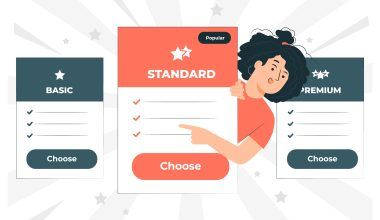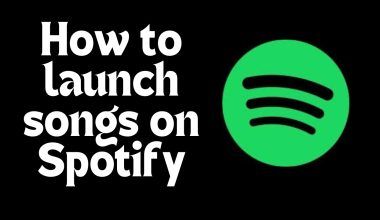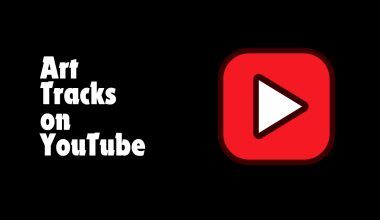In today’s digital world, the way musicians promote their work has evolved dramatically. As an artist, ensuring that your music is accessible on every major streaming platform is crucial. One powerful tool that has emerged in this context is the fanlink. If you’re unfamiliar with the term or how to leverage it for your music, you’ve come to the right place. In this comprehensive guide, we’ll delve into how to create a fanlink for music and why it’s an essential tool for any modern musician.
Understanding What a Fanlink Is
Before we get into the nuts and bolts of how to create a fanlink for music, let’s first understand what a fanlink actually is. A fanlink is a single URL that gathers all the links to your music on various streaming platforms, such as Spotify, Apple Music, YouTube, Amazon Music, and more, into one convenient location. When a fan clicks on your fanlink, they are presented with options to listen to your music on their preferred platform. This is incredibly convenient for listeners and ensures that they have immediate access to your music, no matter which streaming service they use.
The Importance of a Fanlink in Music Promotion
Now that we know what a fanlink is, let’s explore why creating one is so important. The music industry is highly competitive, and getting your music heard by as many people as possible is key to building a successful career. Here’s why a fanlink is a game-changer:
- Consolidation: Instead of bombarding your audience with multiple links for different platforms, a fanlink consolidates all these into one. This simplifies your promotional efforts and makes it easier for fans to find your music.
- Professionalism: A fanlink gives a polished and professional look to your marketing materials. It shows that you’re serious about your music and care about providing a seamless experience for your fans.
- Global Reach: Fans across the world use different streaming platforms. A fanlink ensures that your music is accessible to everyone, regardless of the platform they use.
- Data & Analytics: Most fanlink services offer analytics, which allow you to track the performance of your link. You can see how many people clicked on your fanlink, which platforms they preferred, and even where they are located. This information is invaluable for refining your marketing strategy.
- Increased Engagement: By making it easier for fans to access your music, you increase the likelihood of them engaging with your content. Whether it’s streaming a song, sharing your link, or following you on social media, a fanlink facilitates these actions.
A Step-by-Step Guide on How to Create a Fanlink for Music
Creating a fanlink for your music is a straightforward process, especially with the various online tools available today. Here’s a detailed guide on how to create a fanlink for music:
Step 1: Choose the Right Fanlink Service
The first step in how to create a fanlink for music is choosing the right service. There are several platforms available that offer fanlink creation. Some of the most popular ones include:
- Linkfire: Known for its detailed analytics and customization options, Linkfire is a great choice for artists who want to track the performance of their fanlink closely.
- SmartURL: This platform is user-friendly and perfect for artists who want to create a fanlink quickly and easily without too much customization.
- Feature.fm: This service is tailored specifically for musicians, offering features like pre-save campaigns for upcoming releases and detailed fan engagement analytics.
- ToneDen: Offers not only fanlink creation but also social media marketing tools, making it a good all-in-one platform for artists looking to boost their online presence.
Each platform has its own strengths, so take some time to explore their features and choose the one that best suits your needs.
Step 2: Sign Up and Create Your Account
After selecting a fanlink service, the next step in how to create a fanlink for music is signing up for an account. Most services offer free accounts with basic features, as well as paid plans that offer more advanced options like in-depth analytics, customization, and branding features. Choose the plan that fits your needs and budget.
Step 3: Gather Your Music Links
To create your fanlink, you’ll need to gather the URLs to your music on various streaming platforms. These typically include:
- Spotify
- Apple Music
- YouTube
- Amazon Music
- Deezer
- Tidal
You can also include links to other platforms where your music is available. The more comprehensive your fanlink, the better the experience for your fans. Gathering these links is an essential step in how to create a fanlink for music because it ensures that all your audience’s favorite platforms are covered.
Step 4: Add Your Links to the Fanlink Service
Once you’ve collected all your music links, the next step in how to create a fanlink for music is to input these into your chosen fanlink service. Most platforms will have a simple interface where you can paste the URLs into designated fields. Once entered, the service will generate a unique fanlink that consolidates all your music links into one.
Step 5: Customize Your Fanlink
Customization is a crucial part of how to create a fanlink for music. A well-designed fanlink not only looks professional but also resonates with your brand. Here are some elements you can customize:
- Custom URL: Instead of using a generic link, you can create a custom URL that includes your artist name or the title of your latest release. This makes your fanlink more memorable and easier to share.
- Artwork: Upload your album art or a promotional image to make your fanlink visually appealing. This image will appear whenever someone clicks on your link.
- Description: Add a short description or call-to-action to encourage fans to click through and listen to your music. This could be as simple as “Check out my latest single!” or “Stream my new album now!”
- Social Media Links: Some fanlink services allow you to include links to your social media profiles, giving fans an easy way to follow you on different platforms. Customizing these elements effectively is key when learning how to create a fanlink for music.
Once you’ve customized your fanlink, it’s time to generate it. The service will provide you with a unique URL that you can start sharing immediately. Here are some effective ways to use your fanlink:
- Social Media Profiles: Pin your fanlink to the top of your social media profiles. This ensures that anyone visiting your profile will see it and can easily access your music.
- Email Newsletters: Include your fanlink in your email newsletters to give your subscribers direct access to your latest music.
- Website: Embed the fanlink on your website, ideally on your homepage or in a prominent location, so visitors can easily find your music.
- Music Videos: Add your fanlink to the description of your YouTube videos, or even within the video itself as a call-to-action.
- Physical Promotional Materials: Include your fanlink on posters, flyers, and even merchandise. You can also create a QR code that links directly to your fanlink. Sharing your fanlink widely is a crucial aspect of how to create a fanlink for music that drives results.
Step 7: Monitor Your Fanlink Analytics
A significant advantage of using a fanlink service is the analytics. After you share your fanlink, you can track its performance using the analytics tools provided by the service. This is an essential part of how to create a fanlink for music because it allows you to see which platforms are most popular with your audience, how many clicks your link is receiving, and where your fans are located. Use this data to refine your promotional strategies and target your audience more effectively.
Advanced Tips for Maximizing the Impact of Your Fanlink
Creating a fanlink is just the beginning. To maximize its impact, consider implementing some of these advanced strategies:
Optimize for Mobile Users
A large percentage of your fans will access your fanlink via their smartphones. Ensure that your fanlink is optimized for mobile viewing. Most fanlink services automatically create mobile-friendly links, but it’s always a good idea to test your link on different devices to ensure it looks good and functions properly. Understanding the importance of mobile optimization is critical in how to create a fanlink for music.
Regularly Update Your Fanlink
As you release new music or content, make sure to update your fanlink accordingly. This keeps your link relevant and ensures that fans are always directed to your latest work. You can also update the cover art and description to reflect your newest releases.
If your fanlink is long or complicated, consider using a URL shortening service to create a more shareable version. This makes it easier for fans to remember and share your link with others. Simplifying your fanlink is an important consideration when learning how to create a fanlink for music that is both effective and easy to distribute.
Create Multiple Fanlinks for Different Releases
You don’t have to use just one fanlink. For example, you can create separate fanlinks for each of your releases (albums, singles, etc.). This way, you can tailor each fanlink to the specific release, making the fanlink more relevant and targeted for your audience. This strategy can also help you track the performance of individual releases more effectively, which is a key tactic in how to create a fanlink for music that aligns with specific promotional goals.
Leverage Pre-Save Campaigns
Many fanlink services, such as Feature.fm and ToneDen, offer pre-save features for platforms like Spotify. Pre-save campaigns allow your fans to save your upcoming release to their library before it’s officially available. This boosts the chances of your track being streamed as soon as it’s released. It’s an excellent way to build anticipation and ensure a strong launch day for your new music. Including pre-save campaigns in your strategy is an advanced method in how to create a fanlink for music that drives early engagement.
Collaborate with Other Artists
If you’ve collaborated with other artists, consider creating a joint fanlink that promotes the release across all your collective platforms. This not only makes it easier for fans of all the involved artists to find the music but also maximizes the exposure by tapping into each artist’s fanbase. Collaboration is a powerful way to enhance the effectiveness of how to create a fanlink for music and reach a broader audience.
Use Geotargeting
Some fanlink services offer geotargeting features, allowing you to create location-specific links. This can be particularly useful if you’re planning to target specific markets or regions. For instance, you might want to direct European fans to platforms like Deezer and focus U.S. promotion on Spotify and Apple Music. Geotargeting helps you create more personalized promotional efforts, which is an advanced tactic in how to create a fanlink for music that connects with diverse audiences.
Incorporate Affiliate Links
For artists looking to monetize their music further, some fanlink services allow you to incorporate affiliate links. This means that if a fan clicks through your fanlink and makes a purchase (like buying your album on Amazon), you earn a commission. While this isn’t the primary function of a fanlink, it’s an additional revenue stream worth considering. Monetization through affiliate links is another layer of strategy in how to create a fanlink for music that maximizes potential earnings.
Common Pitfalls to Avoid When Creating a Fanlink
Understanding how to create a fanlink for music also involves knowing what not to do. Here are some common pitfalls to avoid:
Ignoring the User Experience
A fanlink is meant to simplify access to your music, not complicate it. Make sure your fanlink is intuitive and easy to navigate. Avoid cluttering it with unnecessary information or too many links that could overwhelm the user. The goal is to create a seamless experience that guides your fans effortlessly to your music. Ensuring a smooth user experience is crucial in how to create a fanlink for music that truly benefits your audience.
Failing to Test Your Fanlink
Before you start sharing your fanlink widely, it’s crucial to test it. Ensure that all the links work correctly and that the fanlink looks good on both desktop and mobile devices. A broken or poorly designed fanlink can frustrate fans and potentially lead to lost streams and engagement. Testing is an essential step in how to create a fanlink for music to avoid any technical issues that could hinder your promotional efforts.
Overlooking Analytics
The data provided by your fanlink service is a goldmine of information. Don’t make the mistake of overlooking it. Regularly check your analytics to see how your fanlink is performing. Use this data to adjust your promotional strategies, such as focusing more on the platforms that your fans are using most. Analytics play a vital role in how to create a fanlink for music that is continuously optimized for better results.
Not Promoting Your Fanlink Consistently
Creating a fanlink is only half the battle. To maximize its effectiveness, you need to promote it consistently. Don’t just share it once and forget about it. Include your fanlink in every piece of content you produce, from social media posts and emails to live shows and interviews. Consistent promotion is key to how to create a fanlink for music that maintains visibility and drives ongoing engagement.
Ignoring SEO Best Practices
If your fanlink service allows it, optimize your fanlink for search engines. Use relevant keywords in your custom URL and description to make your fanlink more discoverable on platforms like Google. This can help attract new listeners who may be searching for music in your genre. Incorporating SEO best practices is an advanced technique in how to create a fanlink for music that enhances online visibility.
Case Study: Successful Use of Fanlinks by Independent Artists
To understand the real-world impact of fanlinks, let’s look at some case studies of independent artists who have successfully used fanlinks to boost their music promotion.
Artist A: Boosting Pre-Save Campaigns
Artist A, an independent pop musician, used a fanlink service to launch a pre-save campaign for their upcoming single. By promoting the fanlink across social media and in their email newsletter, the artist was able to gather thousands of pre-saves before the official release date. This not only boosted their song’s performance on the day of release but also increased its chances of being featured on curated playlists, thanks to the strong initial engagement. This example highlights a practical application of how to create a fanlink for music that drives early success.
Artist B: Targeting Multiple Markets
Artist B, an indie folk singer, used geotargeting features in their fanlink to promote their music differently across various regions. By directing European fans to platforms like Deezer and focusing U.S. promotion on Spotify and Apple Music, Artist B was able to maximize streams in each market. The tailored approach led to a significant increase in overall streams and a more engaged international fanbase. This case study illustrates the effectiveness of geotargeting in how to create a fanlink for music for diverse markets.
Artist C: Maximizing Monetization with Affiliate Links
Artist C, a hip-hop producer, integrated affiliate links into their fanlink. By doing so, they were able to earn additional revenue from fans who purchased the album or other related products after clicking through the fanlink. This strategy not only boosted their income but also provided fans with easy access to purchase their music and merchandise. Monetization through affiliate links is a strategic extension of how to create a fanlink for music that adds financial value.
Conclusion
In today’s digital landscape, knowing how to create a fanlink for music is essential for any artist looking to grow their audience and streamline their promotional efforts. A fanlink simplifies the process for fans, making it easy for them to find and engage with your music on their preferred platforms. It also provides you with valuable data that can inform your marketing strategies and help you reach more listeners.
By following the steps outlined in this guide, you can create a professional and effective fanlink that enhances your music promotion efforts. Remember to regularly update your fanlink, promote it consistently, and leverage the analytics to optimize your strategy. Whether you’re an independent artist or part of a label, a well-crafted fanlink is a powerful tool that can help you connect with your audience and achieve your musical goals.
For further reading, explore these related articles:
- Top Music Distribution Companies in India
- How Does Music Distribution Work?
- Create a Music Band Website
For additional resources on music marketing and distribution, visit Deliver My Tune.






